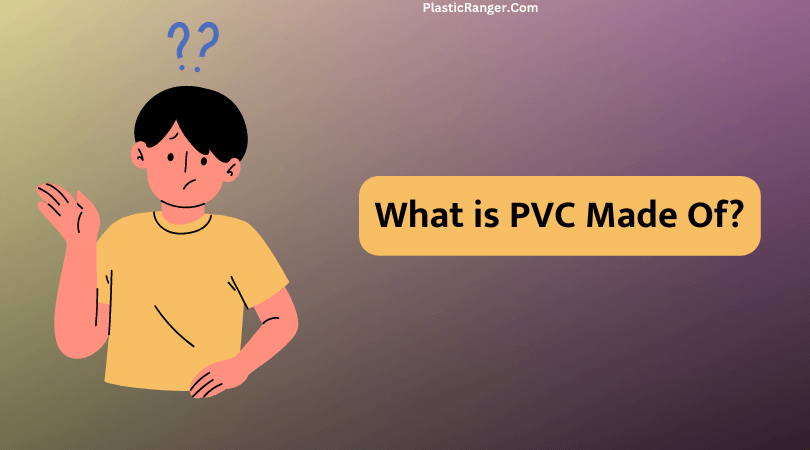What is PVC Made Of
Polyvinyl Chloride, or PVC, is one of the world’s most widely used synthetic materials. This versatile polymer has numerous applications, from construction and healthcare to textiles and sports equipment.
But what exactly is PVC made of? This article will unravel the PVC composition and explore its manufacturing process.
The Basic Composition
PVC is a type of plastic known as a polymer. A polymer is a large molecule composed of repeated subunits, often called monomers. In the case of PVC, the monomer is vinyl chloride.
Vinyl Chloride Monomer (VCM)
Vinyl Chloride is a colourless gas with a mild, sweet odour. This compound is the primary building block in PVC production. It’s composed of carbon, hydrogen, and chlorine atoms.
Specifically, a vinyl chloride molecule has two carbon atoms, three hydrogen atoms, and one chlorine atom. When many vinyl chloride monomers are linked together, they form the polymer known as PVC.
How is PVC Produced?
The production of PVC involves polymerization, which is the process of joining many small molecules together to form a larger one. PVC manufacturing uses explicitly a method called suspension polymerization.
Suspension Polymerization
During suspension polymerisation, vinyl chloride monomers are mixed with water and a polymerization initiator. The initiator begins the chemical reaction that links the monomers together.
The mixture is then heated under pressure. The result is a white powder of PVC polymer suspended in water, hence the name ‘suspension polymerization’.
This PVC powder can then be combined with various additives to create the final PVC product with desired properties.
How is PVC Made: Additives and Plasticizers
PVC is rarely used in its pure form. That’s a reason why it has a higher melting point. It is usually combined with various additives to enhance its physical properties according to specific applications. These additives include plasticizers, stabilizers, impact modifiers, and pigments.
Plasticizers
PVC is naturally a rigid material. Plasticizers are added to make it flexible and soft. They work by inserting themselves between the PVC molecules, increasing their distance and allowing them to slide past each other more easily. This results in a more flexible material. The most common type of plasticizer used with PVC is phthalates.
Stabilizers and Other Additives
Stabilizers are added to PVC to prevent the breakdown of the material when exposed to heat or light, and it does it by significantly altering its structure and density. They absorb the harmful energy and convert it into a less damaging form. Other additives like impact modifiers and pigments change the toughness, colour, and other properties of the PVC.
Summary
In conclusion, PVC is a versatile polymer made from vinyl chloride monomers produced through suspension polymerization. Its versatility is enhanced by additives, such as plasticizers and stabilizers, which modify its properties for various applications.
While PVC’s widespread use presents environmental challenges, efforts towards sustainable manufacturing, recycling, and bio-based alternatives foster a future where PVC remains valuable while reducing its ecological footprint.
Quick Navigation

